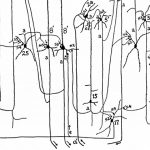Next Friday the 2nd of May at 14:00 h in PG10, we will have a research seminar in neuroscience entitled “Emergent oscillatory activity in the cerebral cortex”.
Our guest is Prof. Maria Victoria Sanchez-Vives, http://www.sanchez-vives.org/, ICREA Research Professor at the IDIBAPS (Institut d’Investigacions Biomediques August Pi i Sunyer) in Barcelona, head of the Systems Neuroscience group.
Prof. Maria Victoria Sanchez-Vives has published a number of influential papers in journals like e.g. Science, Nature Neuroscience or PNAS and is currently the Chief Editor of Frontiers in Systems Neuroscience. She has been funded by Human Frontier Science Program, national and international agencies and has been partner in six European Projects. She is currently coordinator of the FET EU project CORTICONIC.
Her main interests include how neuronal and synaptic properties as well as connectivity determine the emergent activity generated by neuronal networks. The integration of the cortical information giving rise to bodily representation and the combination of brain-computer interfaces and virtual reality for understanding these processes, is another research line of her group.
We strongly suggest not to miss the opportunity to attend to this seminar. Afternoon cakes, coffee and tea will be served during the event.
Best wishes, Emili
Emili Balaguer-Ballester, PhD
Faculty of Science and Technology , Bournemouth University
Bernstein Center for Computational Neuroscience, University of Heidelberg
———————————
Title: “Emergent oscillatory activity in the cerebral cortex”.
Abstract: “Understanding complex systems like brain networks is a challenge. Cortical networks can perform computations of remarkable complexity, accounting for a large variety of behaviours and cognitive states. At the same time, the same networks can engage in stereotypical patterns of spatio-temporal activation, such as the ones that can be observed during sleep, anaesthesia and in cortical slice. Collective phenomena emerging from activity reverberation in cortical circuits at different spatio-temporal scales results in a rich variety of dynamical states. Slow (around or below 1 Hz) and fast (15-100 Hz) rhythms are spontaneously generated by the cortical network and propagate or synchronize populations across the cortex. This is the case even in isolated pieces of the cortical network, or in vitro maintained cortical slices, where both slow and fast oscillations are also spontaneously generated. The similarity between some of these patterns both in vivo and in vitro suggests that they are somehow a default activity from the cortical network. We understand that these emergent patterns provide information on the structure, dynamics and function of the underlying cortical network and their alterations in neurological diseases reveal the circuits dysfunction”.
 New Frontiers in Neuroscience: Neuroimaging and Integrative Multi-Sensing Methods
New Frontiers in Neuroscience: Neuroimaging and Integrative Multi-Sensing Methods Erasmus + Programme: Visit to the Sanchez-Vives Lab at the Institute for Biomedical Research IDIBAPS-Barcelona
Erasmus + Programme: Visit to the Sanchez-Vives Lab at the Institute for Biomedical Research IDIBAPS-Barcelona










 BU academic publishes in online newspaper in Nepal
BU academic publishes in online newspaper in Nepal Final day of the ESRC Festival of Social Science
Final day of the ESRC Festival of Social Science Using Art to enhance Research
Using Art to enhance Research Register now to attend the 17th Annual Postgraduate Research Conference – Wednesday 3 December 2025
Register now to attend the 17th Annual Postgraduate Research Conference – Wednesday 3 December 2025 ECR Funding Open Call: Research Culture & Community Grant – Application Deadline Friday 12 December
ECR Funding Open Call: Research Culture & Community Grant – Application Deadline Friday 12 December MSCA Postdoctoral Fellowships 2025 Call
MSCA Postdoctoral Fellowships 2025 Call ERC Advanced Grant 2025 Webinar
ERC Advanced Grant 2025 Webinar Horizon Europe Work Programme 2025 Published
Horizon Europe Work Programme 2025 Published Horizon Europe 2025 Work Programme pre-Published
Horizon Europe 2025 Work Programme pre-Published Update on UKRO services
Update on UKRO services European research project exploring use of ‘virtual twins’ to better manage metabolic associated fatty liver disease
European research project exploring use of ‘virtual twins’ to better manage metabolic associated fatty liver disease